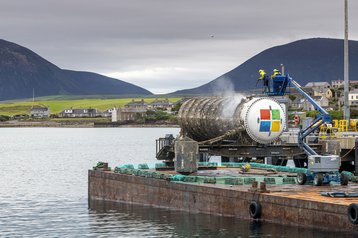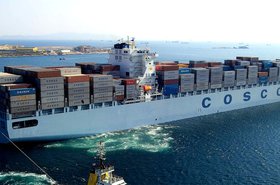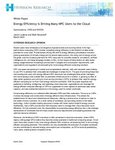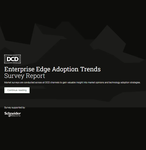Cruise ship company Carnival Corporation & PLC has deployed Microsoft Azure Stack HCI on three of its ships.
Stack HCI, launched in 2019, is Microsoft’s cloud-to-Edge offering. By deploying the solution on board three of its ships, Carnival Corporation has been able to improve connectivity for its customers and the effectiveness of monitoring the performance of vessels, bringing the cloud to physical (and moving) locations.
The three ships in question include the Mediterranean Costa Toscana, and two cruise ships that both journey as far as Antarctica: Seabourn Venture and Seabourn Pursuit (due this year).
In total across its portfolio of brands, the company operates 92 ships that sail from more than 700 ports and destinations, generating a daily total of more than 10 million points of data.
Each brand (including Princess Cruises, Holland America Line, and P&O Cruises) has its own separate IT infrastructure. By moving to a unanimous data fabric with Azure, Carnival Corporation can significantly simplify its processes.
Andy Paul, Carnival Corporation’s senior director of maritime innovation, said: “Today, it’s all fragmented. But this approach offers us the chance to do it all through one environment. This can be a great unifying force for us.
“Having that standardized way of deploying the architecture will be very valuable in terms of having consistent service, consistent maintenance, consistent cybersecurity, and patching all being done in the same way.”
The system will also work with the Neptune software used by the company to monitor the ships. To do this, they are adopting Azure IoT Edge which will enable the real-time data signals to be reported in Neptune and analyzed on board the ship.
As well as improving operations from the worker’s point of view, Stack HCI will improve the connectivity for customers who, according to Paul, are of an increasingly younger demographic.
“They’re more like a regular group of holidaymakers who want applications to work faster, who want to be able to surf the Internet any time,” Paul says. “They don’t want to give up anything on the tech side when they’re on our ships.
“Making these investments gives us the platform to do that. If we do it generically across all our fleet, it gives us a strong base to standardize and enhance our tech offering so we may continue delivering extraordinary cruise vacations to our millions of happy guests,” he adds. “It also makes us technologically more competitive with what’s already out there in the wider vacation market.”
Douglas Phillips, Azure Edge & Platform CVP, said of the Azure Stack HCI offering: “Customers are coming to us and saying, ‘We want to be able to use the power of the cloud with centralized data and security to inform the decision-making for our core business but also to operate our complex applications and IT infrastructure around the planet.’ Every industry has the same challenge today. Carnival Corporation is just a unique version.
“You’ve got a globally distributed organization with endpoints out in the world – in this case, the endpoints are ships that are constantly moving and the people on board with their devices. But the data the company wants to see isn’t on any one of those endpoints. It’s the total sum. It’s really about enabling a global organization to make local decisions.”
Carnival Corporation has experienced breaches in data security and privacy in the past. In June 2022, the company finalized a settlement with the New York Department of Financial Services after cyber security events, though said the value of that settlement was 'immaterial' to its financial reporting for the year.
Carnival is also a customer of Starlink. The company began deploying Starlink connectivity to its fleet in December 2022. Earlier this year, three shipping firms announced that they would be using SpaceX’s Starlink satellite Internet service, including Columbia Shipmanagement, Costamere, and Enesel. To do this, each ship must have a Starlink terminal deployed onboard. These companies are currently trialing the technology on a few ships before deploying it fleet-wide.
Earlier this year, a study found that 63 cruise ships owned by Carnival Corporation released more toxic sulfur gasses than all the cars in Europe. The study also found that carbon dioxide emissions from cruise ships visiting European ports in 2022 were roughly equivalent to the emissions from 50,000 flights between Paris and New York.








